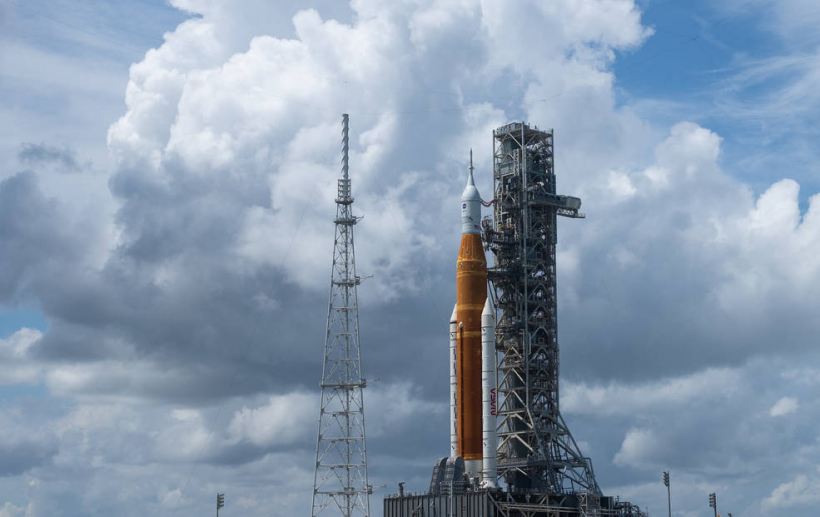After its Artemis rocket ship blasted out for the moon this week, NASA aims to have humans working and residing there for up to two months within a decade.
The space agency's rocket sent a next generation capsule on a crewless journey around the moon and back 50 years after the last Apollo lunar mission.
The much-delayed and eagerly awaited launch of the US space agency's Artemis mission from Florida officially began the successor program to Apollo, which aims to send people back to the moon this decade and build a viable base there as a stepping stone to further manned exploration of Mars.

NASA’s Space Launch System (SLS) rocket with the Orion spacecraft aboard is seen atop the mobile launcher at Launch Pad 39B, Tuesday, Aug. 30, 2022, at NASA’s Kennedy Space Center in Florida.
NASA Eyes Bringing Humans to Moon in This Decade
According to a NASA official, this decade might see extended human stays on the moon.
Howard Hu, the agency's program manager for the Orion lunar spacecraft, housing would be necessary to enable research missions.
He said on Sunday with Laura Kuenssberg that the launch of the Orion rocket by the Artemis rocket on Wednesday was a historic moment for human space exploration.
According to Mr. Hu, the goal was to have people living on the Moon in this decade when the components and systems of Artemis had been thoroughly examined and shown to be safe.
He said that determining if water exists in the Moon's south pole is a major motivation for returning there because it may be used as fuel for spacecraft traveling further into space, such as Mars.
"We're going to be sending people down to the surface and they're going to be living on that surface and doing science," Hu told BBC News.
"Artemis missions enable us to have a sustainable platform and transportation system that allows us to learn how to operate in that deep space environment," he added.
ALSO READ: NASA Artemis 1 Shares Stunning Photo of Earth, Moon [LOOK]
Artemis Base Camp For Moon Dwellers
There will be "a modern lunar cabin and even a mobile home" at what it calls Artemis Base Camp, where astronauts can remain for up to two months.
Another spokesperson told Coast FM that NASA intends to build on the success of the human return mission in four years and deploy crews to the moon roughly once a year after that.
The agency's Artemis Base Camp proposal features a contemporary lunar dwelling, a rover, and even a mobile house to provide astronauts with a place to live and work on the moon.
Early missions will include brief surface stays, but as the base camp develops, the objective is to enable people to spend up to two months at the lunar surface at a time.
The 25-day Orion voyage for the three-week Artemis I mission, which launched this week, will send the spacecraft to within approximately 60 miles (97 km) of the lunar surface before it loops back to Earth after traveling roughly 40,000 miles (64,400 km) beyond the moon.
RELATED ARTICLE: NASA's Artemis I Moon Rocket Finally Launches to Space on Historic Return to the Lunar Surface
Check out more news and information on Space in Science Times.










!['Cosmic Glitch' in Einstein's Theory of General Relativity Could Be Explained in This New Scientific Tweak [Study]](https://1721181113.rsc.cdn77.org/data/thumbs/full/53435/258/146/50/40/cosmic-glitch-in-einsteins-theory-of-general-relativity-could-be-explained-in-this-new-scientific-tweak-study.jpeg)



